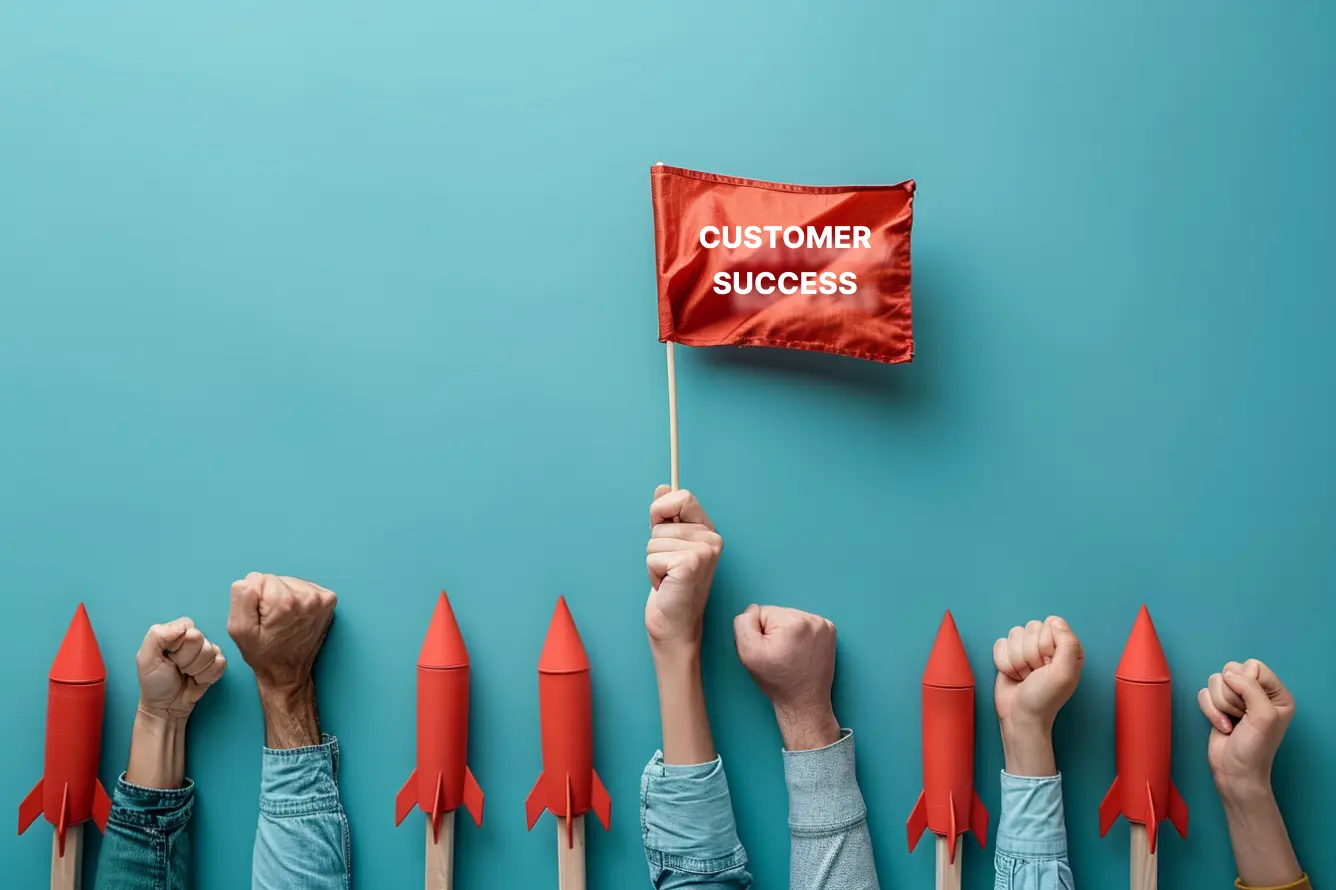Customer success (CS) is a component of the SaaS industry that is taking on more and more significance. It plays a crucial role in business in general. You will lag behind other companies if you don’t care about the success of your clients.
Yet, customer success in SaaS is still a relatively young area, and entering something you don’t fully understand might be challenging. To help you learn everything there is to know about SaaS customer success, we have put together this reference.
Customer success in SaaS definition
In SaaS, customer success is the discipline of active onboarding, training, developing relationships with clients, and providing assistance to help them achieve their goals. Customer success actively develops strategies and procedures to assist customers in making the most of their product, as opposed to customer support, which responds to support inquiries.
Several startups use account management or customer support to manage client success. Nonetheless, an increasing number of SaaS companies are addressing customer success as a separate division and income source.
Why is customer success important? Users are more likely to abandon a product if they never completely utilize it, have UX problems, or are unable to quantify the results. This causes customer attrition and revenue loss for SaaS firms, who then must spend money on client acquisition to make up for that income.
Customer success aids businesses in lowering turnover while increasing revenue, customer pleasure, and retention.
I think you might be confused a little bit when it comes to customer success and customer support. So, let’s distinguish them in the next section.
Customer success vs. customer support

Customer success and customer support, while having similar impressions, are two distinct divisions that each provide unique contributions to the CX as a whole.
Approach: proactive vs. reactive
Customer support teams are reactive, which means they respond to requests for assistance from customers.
On the other hand, customer success teams provide proactive support, which means they provide clients with the tools they might need to completely eliminate customer support.
Metrics
The majority of customer support metrics assess the speed and quality of client interactions. Among these measures are the following:
- The first response time. This statistic computes the time between a customer’s initial inquiry and the first response from an agent.
- Net Promoter Score (NPS) (NPS). A survey may be used by customer service teams to determine their organization’s NPS, which is a measure of how likely a customer is to suggest a product to a friend or colleague.
- Customer effort rating. This statistic employs survey data to determine how much effort consumers expend when using a product or interacting with the support staff to remedy an issue.
Customer success metrics, on the other hand, are typically used to track long-term company objectives. Following are some typical examples of customer success:
- Rate of retention. A successful customer success plan should increase a company’s retention rate, which is a measure of customer loyalty.
- The lifetime value of a customer. This statistic computes how much money a typical client spends with a company over the course of their lifetime.
- Upsell percentage. An upsell rate quantifies the sum of money earned by upselling methods, which are sales strategies that urge existing customers to acquire product upgrades.

Maturity
Due to its greater importance to ongoing business operations, customer support has a longer history than customer success.
Contrarily, customer success is not yet as integrated into the CX plans of many firms. While the department of customer success can provide businesses a long-term competitive edge, its effects on daily operations are often less dramatic than those of the customer service department.
Skills
Customer service representatives frequently assist irritated and anxious clients in solving challenging issues. These professions require emotional intelligence in addition to technical expertise to remain composed during high-stress situations.
Customer success teams require emotional intelligence as well since they, too, address customer issues. These teams focus more on preventing new issues than solving old ones, though.
Focus: narrow vs. wide
The majority of interactions with customer support are confined to particular client issues. When a consumer contacts a company for assistance, the customer support team takes care of the issue.
Contrarily, customer success is primarily concerned with assisting clients in achieving comprehensive company objectives. A customer success manager could follow up with a client on a regular basis to build rapport, enhance communication, and find out about the client’s particular goals or KPIs.
The client may then request strategic guidance and training from the customer success team to assist in achieving those objectives.
How to be great at customer success in SaaS?
Integrate these key elements to create a customer success program for your SaaS company.

Source: Regalix
- Onboarding
Often, after a sales handoff, onboarding is where clients first engage with customer success. Customer success teams set up user accounts during onboarding, aid with data transfer, and frequently do one-on-one training and user support.
Customer satisfaction and product uptake depend on a successful onboarding process.
- Success Preparation
If you don’t know what they are, you can’t demonstrate to your clients how you are achieving their objectives. A success plan outlines your strategy for achieving your client’s goals and identifies them.
Asking your clients about their expectations and pain areas will help you develop a success plan. Then, sketch up a specific activation strategy with important tasks, participants, and KPIs for success.
- Review of the Business Quarterly
When a consumer is enrolled, customer success teams shouldn’t stop communicating.
SaaS customer success managers should follow up with their clients on a frequent basis to ensure the customer success strategy is on track. CS managers should talk about product usage, customer happiness, and any major issues they are having during these conversations.
- Playbooks
A playbook defining the company’s best customer success strategies should be available to every customer success team. Playbooks may contain guidelines, standards, and even instructions for teams to follow.
- Self-serving Content
Although one-on-one assistance is the foundation of customer success, self-service material is a crucial addition.
Technical knowledge bases, training materials that teach consumers how to utilize the goods, and online peer networks are a few examples of self-service customer content.
- Feedback Loops
Customer success may be quite helpful in alerting product teams to ongoing problems with their products. These feedback loops benefit both brands and their customers, who are more likely to trust them when adjustments are made.
Now you are aware of what is the role of customer success in your business and the essential components for customer success in SaaS. When it comes to taking action, it is also important to employ a powerful tool to assist you. Here we got a solution for you.
Epilogue Systems got a solution for you

Source: Chargify
Opus promotes successful user onboarding and competency by providing in-app assistance. This reduces time to competence by allowing customers to choose the advice format that best suits them while accomplishing their activities.
It provides a customer onboarding tool that assists you in creating flawless first-time user experiences, as well as customer onboarding solutions for all businesses kinds.
The program provides a drag-and-drop user interface that aids in the creation of forms with several features and hundreds of templates.
What truly distinguishes Opus is its emphasis on creating effective client journeys in a step-by-step, super clean manner. It makes it a fantastic choice for both beginners and expert instructors.
In conclusion,
Building a strong customer success program is essential to developing a successful company. It goes without saying that you must draw in new clients, but if none of them remain loyal, neither will you. Build your team strategically, search for tools that can ease the workload, and make sure you’ve covered all the bases.
You not only get to assist your clients in resolving their most pressing issues, but you also get to contribute to the definition of a whole industry. Contact us right away if you wish to embark with us on defining customer success in SaaS.





